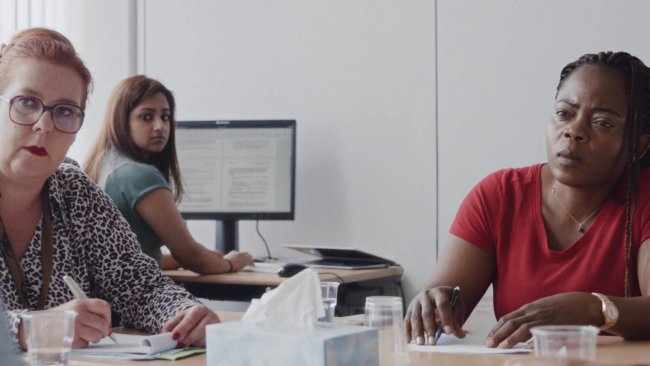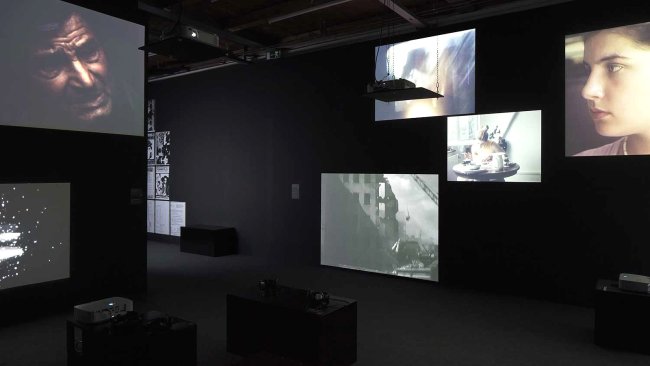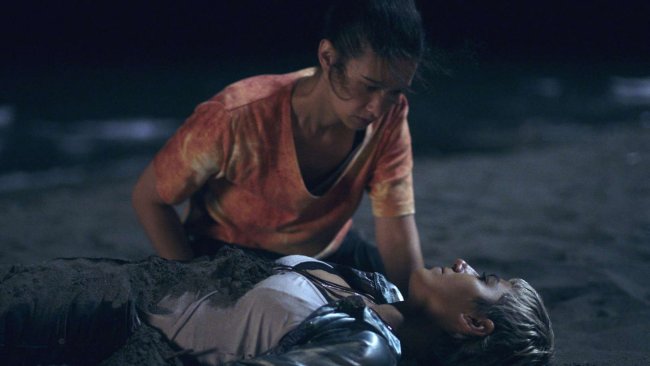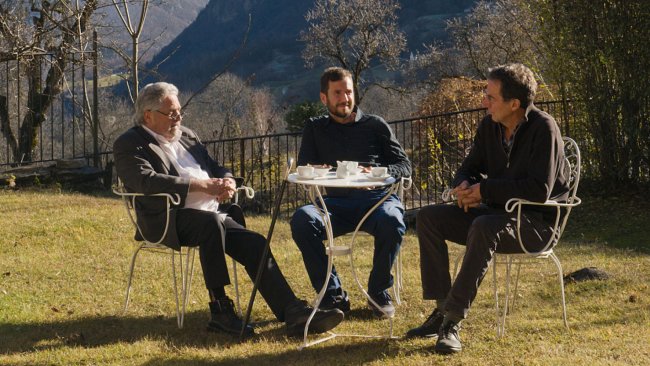Alice Diop in Switzerland
After her presence at L'immagine et la parola (Locarno Film Festival) in March 2024, Alice Diop comes back to Switzerland for a Masterclass at Visions du Réel - on Saturday the 13th of April.
Text: Maria Di Salvatore

When asked to speak about her idea of cinema and her methodology, the Diop used her talent as storyteller and mesmerised the audience with a punctual recollection of the long and erratic path that led her to cinema, a path that started in the field of literature and art. She described the awkward job interview at seventeen for a position as art curator at the Louvre, being the only black woman amidst white wealthy candidates, continued into the academic world where she studied African History at the Sorbonne and also joined the leftist student party, and eventually ended in the realm of cinema, which for her turned out to be the only medium capable of channelling a feeling of inner dissatisfaction with the cultural establishment of French society. Both journalism and university disappointed her, she said, since they rarely question the status quo, and when they try to do so they do not have the means for subverting the stereotyped representation of minorities. Although Diop firmly believes in the values of fraternity and equality, she thinks at the same time that the French society is based on a republican mythology, which presents an unquestionable model of equality that does not correspond to the truth. In her opinion, all the social contrasts are hidden under a universalist culture that finally ignores the real discriminations and is not able to challenge the current system.
The way cinema can shake these postulates is by generating emotions and by providing a new representation of the individuals, different from the vague stereotyped images that people are used to. Diop acknowledged her affinity with the cinema of Pier Paolo Pasolini; she admits that she feels close to his political and formal approach to cinema since, like the Italian director, she tries to give dignity to people that have been always ignored by the cameras of cinema, on the contrary choosing to put them in the centre of the framing. She often shows old, fragile people, using tenderness to subvert stereotypes, or she emphasises the body of black women, almost redeeming them politically. In Saint-Omer (2022), for example, she selected the actress for the main role of Laurence (Guslagie Malanda) mostly for her gaze, not so much for her resemblance to the true woman that murdered a baby in Saint-Omer. The framing is inspired by the classical painting of Leonardo Da Vinci ("Portrait of an Unknown Woman") in order to better convey the personality of the character, who is set exactly in the centre of the image and whose words can evoke different emotions among the audience.
Saint-Omer is Alice Diop's first fiction movie but the difference between fiction and documentary is minimal, and the director mostly privileges the sequence shot, a technique that – compared to film editing – better captures the natural flow of events and incorporates emotions. The setting of the movie coincides with the place where the facts took place, a great part of it being the courthouse where Claire Mathon (photography director) plays with the light like a sculptor. Reality and fiction complete each other: all the dialogues are based on the documents of the trial, and even the language used by the protagonist is based on the unusual elocution that characterizes the black woman accused of the murder. Laurence admits that she doesn't know why she committed the crime and wishes she would discover it by the end of the trial. However, at the end of the trial, the audience discovers something more: the complexity of the situation that a young black woman faces in modern French society.
Indeed, having not received formal training from an established film school Diop started with making documentaries, a form of cinema that can be self-taught, she says. Casually, together with a group of emerging producers and directors, she created a sort of new Nouvelle Vague, alternative to the national one. In this way, she has been able to avoid the risk of producing movies that would have probably been forgotten without this collective effort – as has happened to many remarkable French movies from the Seventies and the Eighties. She discovered them while working for a project at the Centre Pompidou that was meant to create an ideal Cinémathèque of all the suburbs of the world. Among them, she mentioned the interesting work of the Collectif Mohamed (1978-1981), a group of teenagers living in the Parisian suburbs and recounting their violence as a daily feature (such as in Zone immigrée, 1980). Another inspiration for her cinema has been the admirable work of Chris Marker, the versatile French intellectual of which Diop recalls Le joli mai (1962), a unique mixture of documentary, fiction, and experimentation that collects interviews and poetic images of Paris at the end of the Algerian war. She also mentioned the work of many contemporary Algerian French directors, like Malek Bensmail who analyses complex topics, such as democracy, language, identity, mostly in a realist style. Diop’s film Nous (2020) clearly refers to this tradition of filmmaking: the portrait of the French population living in different suburbs of Paris was actually conceived after the terrorist attacks in 2015 – after a period dedicated to silence and meditation. She tried to understand what the identity of French people living in Paris is, while travelling from North to South through the city, following (thirty years later) the footsteps of François Maspero's logbook Les Passagers du Roissy-Express (1990).
Diop's long training as documentarist does not prevent her from using fiction to enhance the expressiveness of her cinema. In Saint Omer, the character of Rama (Kayije Kagame), the writer, helps the movie to be more than a simple head-on report, and to present the violence of the story through a gaze of tenderness. In fact, the writer often identifies herself with the protagonist Laurence, the topic of maternity being their common thread. The construction of Rama's character is paradigmatic in Diop’s methodology, as it is the result of three different elements at work: the actress’ interpretation, the writing (by Diop herself, with Amrita David and Marie Ndiaye), and the autobiographical elements that the director inserted in the story.
Through the thought-provoking discussion with Diop we realise that, for her, cinema is an essential choice in order to express the rage of discriminated people and depict the violence of society. Cinema has the power to propose a unique view point on society, because it can give value to the singularity and the dignity of each person, whether having a migrant past or not. In this way, it can avoid the mistake of presenting Arabs, black people or other minorities as a blurry collective, or as a threat without individuality – a misrepresentation that often emerges in the mass media and is responsible of the harsh attitude of the police towards these groups. Cinema, for Alice Diop, has the fundamental and urgent task of creating images of those whose absence in the public sphere is dangerous, images that will emancipate people from any stereotyped description.
Info
L’immagine e la parola 2024 | Locarno Film Festival | Masterclass
Visions du Réel Nyon 2024 | Masterclass
First published: March 26, 2024



